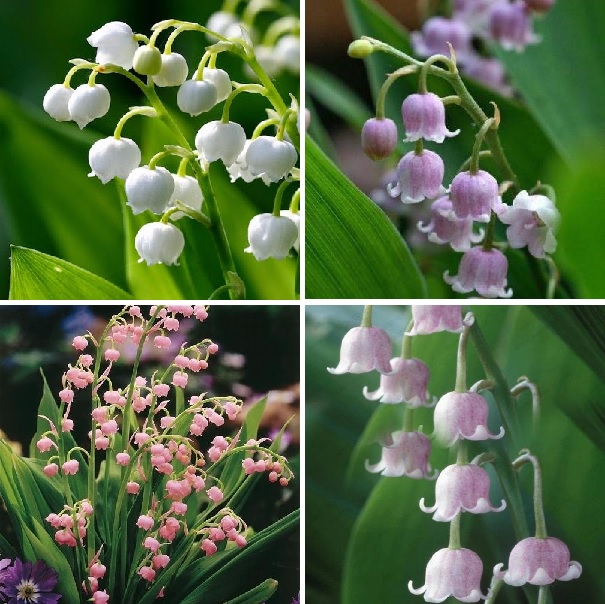Lily of the valley (Convallaria majalis) is not a true lily; its actually part of the asparagus family, though its foliage is reminiscent of some lilies. This plant has small green leaves and petite, fragrant, white flowers that rise on long stems from the leaf clumps in spring. This is a hardy ground cover that spreads gradually but persistently to form dense colonies.
It is considered invasive in much of the Midwest and Northeast. Be aware that lily of the valley is toxic to humans and pets.
Hey there, orchid lovers! I’ve been growing orchids for years, and today I wanna share everything I know about one of the most fascinating species – the Lily of the Valley Orchid. Whether you’re talking about Cuitlauzina pulchella or Dendrobium monophyllum, these beauties can be quite tricky to grow, but trust me, they’re worth the effort!
What Makes Lily of the Valley Orchids Special?
Let me tell you something interesting – there are actually two different orchids commonly known as “Lily of the Valley Orchid”
- Cuitlauzina pulchella (The Beautiful Cuitlauzina)
- Dendrobium monophyllum (Australian Lily-of-the-valley Orchid)
Cuitlauzina pulchella: The Mexican Beauty
This stunning plant was previously known as Odontoglossum pulchellum and Osmoglossum pulchellum (yeah scientists love changing names!). Here’s what makes it special
- Native to high-elevation rainforests in Mexico and Central America
- Produces fragrant, white, star-shaped flowers
- Each flower spike can have 2-8 blooms
- Flowers are super showy and long-lasting
- Perfect for hanging baskets or pots
Dendrobium monophyllum: The Aussie Variant
This fella is quite different from its Mexican cousin
- Native to Australia (Queensland and New South Wales)
- Produces yellow, bell-shaped flowers
- Gets about 5-20 flowers per stem
- Blooms from August to December
- Forms nice clumps when happy
Growing Your Lily of the Valley Orchid
Light Requirements
Partial shade is your best friend here! These orchids hate direct sunlight - it'll burn their leaves faster than my attempts at making toast in the morning! They need:- Bright but indirect light- 2-6 hours of filtered sunlight- Protection from harsh afternoon sunTemperature and Climate
Here’s the tea on temperature:
- Cool to intermediate conditions
- Best suited for USDA zones 10a-11b
- Doesn’t like excessive heat
- Needs good humidity
Potting and Medium
I learned this the hard way – these plants are super picky about their home!
- Use medium fir bark mixed with:
- Perlite
- Charcoal
- Ensure good drainage
- Don’t disturb roots unless absolutely necessary
- Plants flower best when slightly pot-bound
Common Problems and Solutions
Pest Issues
Nobody likes uninvited guests, right? Watch out for:
- Boisduval Scale
- Greenhouse Thrips
- Hemispherical Scale
- False Spider Mites
Growing Challenges
Listen up, fam – here are some issues you might face:
- Root rot (usually from overwatering)
- Brown leaves (too much direct sun)
- Leggy growth (insufficient light)
- Reduced flowering (could be several factors)
Maintenance Tips
Here’s my personal maintenance schedule:
- Water when potting medium dries out
- Provide winter rest period (reduce watering)
- Repot only when medium breaks down
- Monitor humidity levels
- Check regularly for pests
Size and Space Requirements
Don’t worry if you’re tight on space:
- Height: 1-1.8 feet
- Width: 1-3 feet
- Available space needed: Less than 12 inches
Why I Love These Orchids
Despite being high-maintenance (kinda like my ex lol), these orchids are totally worth it because:
- They’re non-toxic to pets (cats, dogs, and horses)
- Perfect as specimen plants
- Great for humidity-prone areas
- Provide amazing fragrance
- Look absolutely stunning when in bloom
Final Thoughts
Look, I won’t sugar-coat it – growing Lily of the Valley Orchids ain’t a walk in the park. They’re like that friend who’s super high-maintenance but totally worth having in your life. If you’re up for the challenge, these beauties will reward you with some of the most spectacular blooms you’ve ever seen!
Remember, every orchid grower was once a beginner, so don’t get discouraged if things don’t work out perfectly at first. Keep experimenting, learning, and most importantly, enjoying the journey!
Would you like me to explain any specific aspect in more detail? Drop a comment below – I’d love to help you out with your orchid growing adventure!

Pruning
No pruning or deadheading is necessary with this plant. Allow the foliage to remain in place and decay, which provides a natural mulch for the plants.
Types of Lily of the Valley
In addition to the typical lily of the valley species found in gardens, there are several named cultivars available, including:
- C. majalis Rosea bears rosy pink flowers.
- C. majalis Fortins Giant has larger flowers than the typical lily of the valley.
- C. majalis Flore Pleno is valued for its double flowers.
- C. majalis Hardwick Hall has a yellow outline to its leaves.
- C. majalis Albostriata has white streaks throughout the leaves.
How to Grow Lily-of-the-Valley Indoors – White Flower Farm
0
